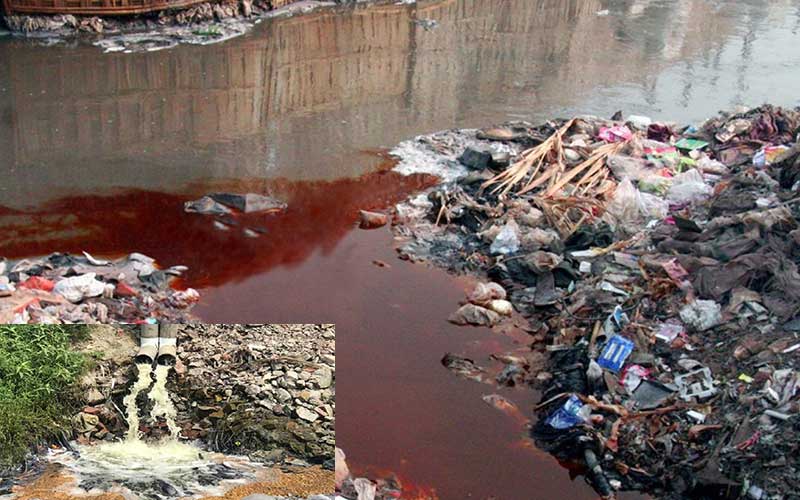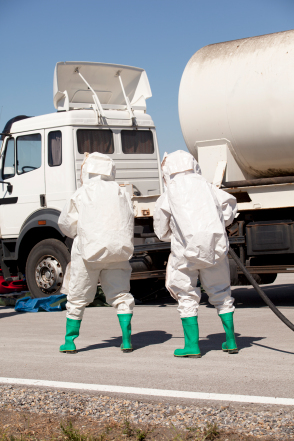Industrial Wastewater Treatment: Advanced Methods for Effective Monitoring
Industrial Wastewater Treatment: Advanced Methods for Effective Monitoring
Blog Article
Exactly How Fluid Garbage Disposal Works: An In-depth Introduction of Strategies and Technologies Employed

Introduction of Fluid Waste Kind
The intricacy of fluid waste types requires a detailed understanding of their qualities and implications for disposal. Fluid waste can generally be categorized into numerous kinds, including commercial, community, agricultural, and contaminated materials. Each group exhibits distinct residential or commercial properties, requiring specific administration approaches to mitigate ecological and health risks.
Industrial liquid waste originates from producing processes and commonly consists of a series of pollutants, such as heavy steels, solvents, and organic compounds. Municipal fluid waste, largely making up wastewater from houses and commercial facilities, has organic issue, nutrients, and pathogens (industrial wastewater treatment). Agricultural fluid waste, including overflow from farms, might consist of fertilizers, pesticides, and animal waste, presenting threats to water top quality and communities
Unsafe fluid waste is characterized by its poisoning, sensitivity, or possible to cause injury. This category includes materials like acids, bases, and specific chemicals that necessitate stringent handling and disposal procedures. Recognizing these diverse liquid waste types is vital for developing effective disposal approaches and guaranteeing compliance with ecological regulations. Proper category and characterization are vital for implementing appropriate therapy methods and reducing the negative influence on public health and wellness and the atmosphere.
Physical Treatment Methods

Screening is the first action, where larger particles and particles are eliminated from the fluid waste utilizing displays or grates. This process safeguards downstream devices from damages and makes certain smoother operation. Following screening, sedimentation utilizes gravitational force to separate solids from liquids. In sedimentation containers, larger particles clear up near the bottom, forming a sludge layer, while the made clear liquid can be more dealt with.
Purification is an additional important technique that involves passing the fluid through permeable materials, such as sand or membrane layers, to catch smaller sized particles. This action boosts the quality of the liquid, making it appropriate for succeeding therapy procedures.

Chemical Therapy Methods
Chemical therapy techniques are crucial for successfully taking care of fluid waste, particularly in addressing liquified and colloidal contaminants that physical approaches may not sufficiently get rid of. These methods utilize numerous chemical agents to counteract, precipitate, or transform unsafe materials into less hazardous kinds.
One usual approach is coagulation and flocculation, where chemicals such as alum or ferric chloride are included in advertise the aggregation of suspended bits. This process boosts sedimentation, enabling less complicated elimination of the resulting sludge. Additionally, oxidation processes, employing representatives like chlorine or ozone, are utilized to damage down complex organic substances and microorganisms, rendering the waste much safer for discharge or further treatment.
Neutralization is an additional critical technique, which adjusts the pH of acidic or these details alkaline waste streams to neutral levels, protecting against prospective damage to downstream systems and the atmosphere. Moreover, progressed oxidation processes (AOPs) utilize mixes of oxidants and ultraviolet light to break down persistent pollutants, attaining a greater degree of therapy efficiency.
Organic Therapy Procedures
Biological treatment procedures play a critical duty in the management of liquid waste by utilizing microbes to disintegrate organic issue read and lower pollutant degrees. These procedures can be broadly categorized into anaerobic and aerobic treatments, each using particular microbial communities to accomplish efficient waste deterioration.
Cardiovascular treatment involves making use of oxygen to help with the failure of organic products by germs. This process is frequently executed in triggered sludge systems, where oygenation storage tanks supply a conducive setting for microbial growth, leading to the oxidation of organic contaminants. The resultant biomass can be divided from dealt with effluent with sedimentation.
In contrast, anaerobic treatment happens in the lack of oxygen, depending on various microorganisms to break down raw material. This approach is especially advantageous for high-strength waste, as it creates biogas, a renewable power source, while decreasing sludge production. Technologies such as anaerobic digesters are regularly used in commercial and community applications.
Both anaerobic and cardio biological treatments not only reduce the ecological influence of liquid waste yet also assist in source recovery, making them important elements of sustainable waste monitoring strategies. Their performance, flexibility, and effectiveness support their prevalent implementation throughout various markets.
Emerging Technologies in Disposal
Cutting-edge techniques to liquid garbage disposal are quickly advancing, driven by developments in innovation and an enhancing emphasis on sustainability. Amongst these emerging technologies, membrane bioreactors (MBRs) find out have acquired grip for their capacity to combine biological therapy with membrane filtering, resulting in top quality effluent that can be reused in numerous applications. MBRs allow smaller sized impacts and a lot more effective operations contrasted to conventional systems.
One more encouraging growth is making use of anaerobic food digestion combined with nutrient recovery modern technologies, which not just treats fluid waste yet likewise generates biogas and recoups important nutrients like nitrogen and phosphorus. This dual benefit boosts source performance and minimizes environmental impact.
In addition, progressed oxidation procedures (AOPs) are being adopted for the destruction of complex organic toxins. These methods make use of powerful oxidants and stimulants to damage down pollutants at the molecular degree, offering an extremely effective remedy for tough waste streams.
Additionally, the assimilation of artificial knowledge and artificial intelligence in waste management systems is maximizing functional performance and anticipating upkeep, bring about decreased prices and boosted environmental conformity. These modern technologies reflect a considerable shift in the direction of even more effective and sustainable fluid waste disposal methods.
Verdict
Finally, reliable liquid waste disposal requires a thorough understanding of numerous methods and innovations. The assimilation of physical, chemical, and organic treatment techniques ensures the reliable management of varied waste kinds. Additionally, the introduction of ingenious innovations enhances therapy efficiency and advertises sustainability in waste administration methods. By continuously progressing these methods, it becomes possible to resolve the expanding challenges connected with fluid waste, ultimately contributing to ecological security and source recuperation.
Liquid waste disposal is a critical element of ecological administration, needing a comprehensive understanding of various methods and innovations customized to different waste types. Liquid waste can generally be classified into numerous types, including commercial, local, agricultural, and unsafe waste. Agricultural fluid waste, including drainage from ranches, may contain plant foods, pesticides, and animal waste, presenting risks to water quality and ecosystems.
Various physical treatment techniques play an important duty in taking care of liquid waste efficiently - industrial wastewater treatment.In final thought, efficient liquid waste disposal demands a comprehensive understanding of various methods and modern technologies
Report this page